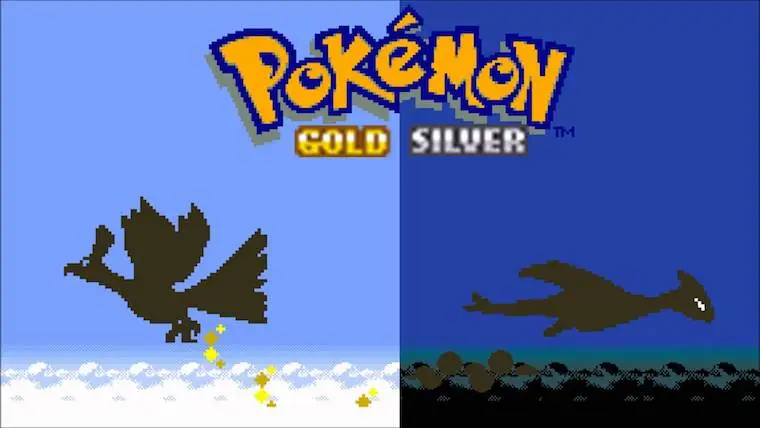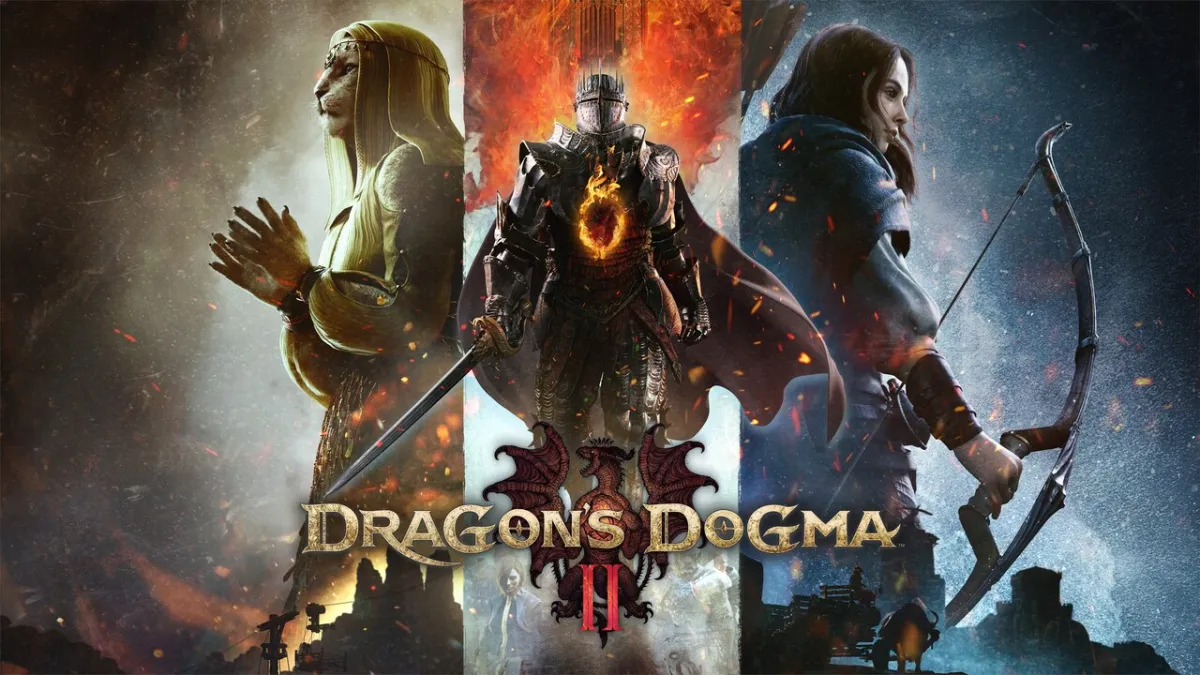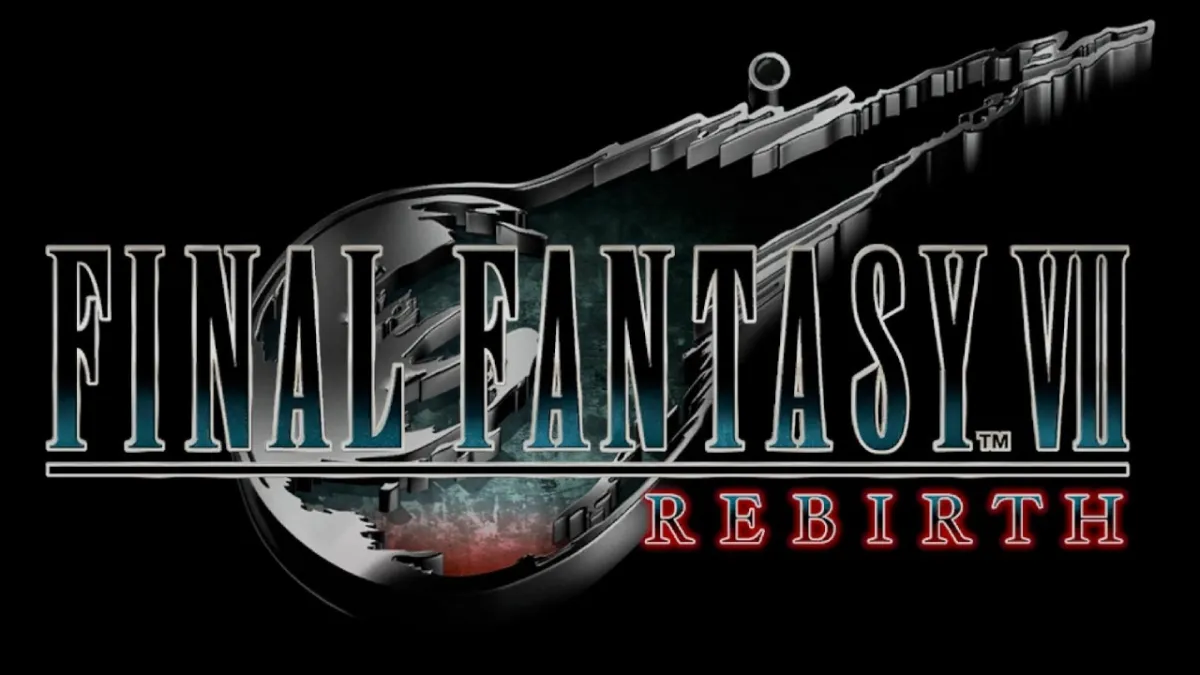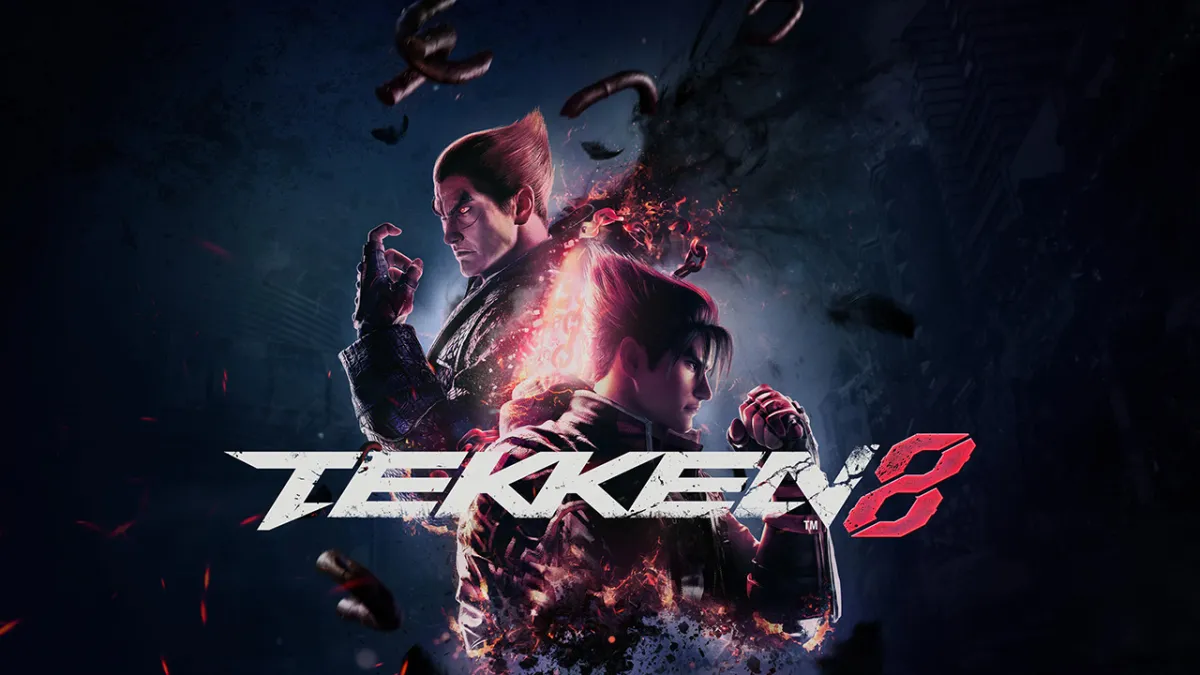As a young kid, I wasn’t allowed to play video games much. However, I was obsessed with Pokémon from watching the TV show and collecting the trading cards. Christmas of 2001, when I was seven years old, my parents finally succumbed and got me a Game Boy Color and Pokémon Crystal Version. Not long after that, I got my hands on Blue Version and Silver Version. I played these games to death and have remained a fan, at least of the main series games, ever since. Prior to the re-release of Gold and Silver on the 3DS Virtual Console, it had been probably fifteen years since I played either game. I started playing Pokémon games during the 2nd Generation, so I was excited to re-play the original 2nd Generation games and see what I thought of them a decade and a half later. For this review, I played Silver Version since that is the one I had when I was a kid, but seeing as how Silver and Gold are almost the same game with just a few minor differences, this review will stand for both games.
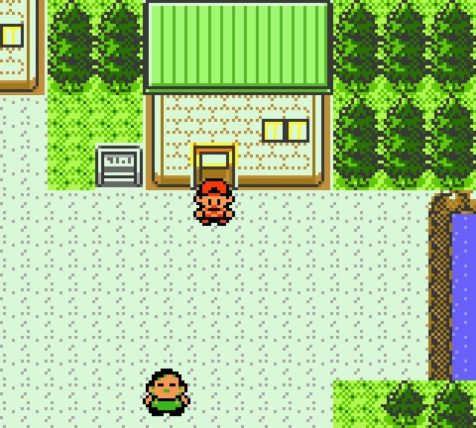
So how do you review a game that you spent so much time playing when you were a kid? For starters, you should try to remove your nostalgia blinders as much as possible. I don’t know that anyone entirely can, since enjoyable experiences of playing this game, for example, are so rooted into my subconsciousness. I found myself getting nostalgic over things as recurring as the graphic style or the music to things as insignificant as walking up to an item on the ground and seeing that it is as big as the character, or seeing the animation for the move Cut (I guess I used it a lot when I was a kid?). In addition to my own feelings about the game, the 2nd Generation of Pokémon games have gone on to often be proclaimed as the greatest Generation, the time when Pokémon as a franchise was at its height. In this review, I will attempt to assess what these games were at the time as well as reflect on how they hold up today, nearly two decades since their original releases in Japan in 1999.
Whether you like the games or not, Generation 2 has been massively important in shaping Pokémon games into what they are today.
Pokémon Gold and Silver brought a lot of things to the franchise that would go on to become mainstays in the series, such as day-to-night transitions (something that would disappear in Generation 3, but be brought back in Generation 4 and then stay in all future Generations), breeding and eggs, shiny Pokémon and much more. Whether you like the games or not, Generation 2 has been massively important in shaping Pokémon games into what they are today. So that’s something to definitely keep in mind going forward. There is certainly a lot to complain about in regards to these games as well, particularly when comparing them to newer entries in the series, but we’ll get into that later.
Back in 2000, Pokémon was the biggest thing in the world. I remember being six years old and attending the premiere of Pokémon: The Movie 2000 and it was a huge event with tons of people, celebrities, live music, all this stuff. Nowadays, most Pokémon movies go straight to DVD (the upcoming 20th movie is an exception since it is something of a landmark, but even in that case the movie will only be in theaters for two days, nothing compared to the massive event a Pokémon movie was in the late 90s or early 2000s). Pokémon has remained a relevant franchise for an impressively long time, but it has never quite regained the massive, worldwide popularity it attained during the first two Generations, from about 1998-2001. As a young kid during this time, I can attest that the entire playground was obsessed with the franchise. When news hit that there was going to be a new Generation of Pokémon, featuring a whole new region with one hundred new creatures, we all lost our minds. This was the first time a new Generation was being created since the franchise’s inception, so we had no idea what to expect. It was kind of a big deal.
Although Crystal was the first Pokémon game I had, I actually finished Blue first, the reason being that I got Blue not too long after Crystal and the 1st Generation games are shorter than the 2nd, largely due to the post-game content that we’ll get into later on. I only mention this because when playing these 2nd Generation games, it certainly helped to be familiar with the 1st Generation games, though it was by no means necessary. It’s hard to say that the 2nd Generation games are superior to the 1st Generation games because I, someone who loves every Generation of Pokémon, find it hard to say that any Generation is better than any other Generation. It’s just simply a fact that every Generation is trying to accomplish something different, and I happen to think that they all do so successfully. The 1st Generation was given the task of introducing the franchise. Sure, there are a lot of faults in those games by today’s standards, but they were exactly what they needed to be at the time. I think the same can be said of the 2nd Generation. While it fixes a lot of what was wrong in the 1st Generation, there were still a lot of things that could have used improvement, things that no one even knew needed improvement until they were improved in future Generations. This is another thing to keep in mind when reviewing a game nearly two decades old.
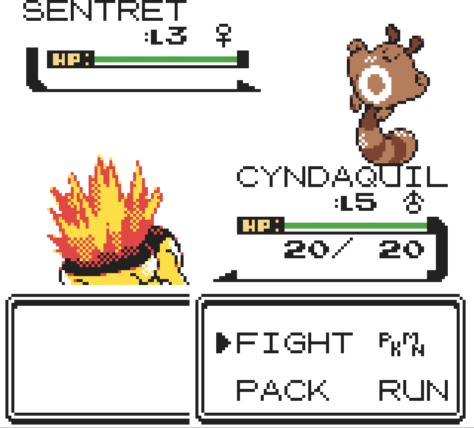
The most obvious way to review the 2nd Generation games is to compare them to the 1st Generation games. In some ways this is easy to do and in other ways it is difficult. For example, it’s clear that the graphics are much better in the 2nd Generation. For one thing, there are colors. Also, each Pokémon’s battle sprites look a lot better this time around than they originally did, particularly the back sprites of your Pokémon that you see after sending them out to fight, which look infinitely better than the pixelated messes that were the back sprites of your Pokémon in the 1st Generation games. There are more Pokémon in these games, as well as more moves and more types, which added a ton of more possibilities in battles. The games are hard to compare in that it’s not like the 2nd Generation was trying to make a better version of the 1st Generation. They are completely different games. You play as different characters in different lands, interacting with different people and battling with different Pokémon. You can’t exactly say that the Johto region is better or worse than the Kanto region; they’re just two different regions. That’s my opinion, at least.
Back in the day, if you loved the 1st Generation games, there was really no reason to not love the 2nd Generation games as well. No one was accusing the 2nd Generation Pokémon of having worse designs than the 1st Generation Pokémon, which made sense, since, even though none of us kids knew it at the time, many of the 2nd Generation Pokémon were designs left over from the 1st Generation that simply didn’t fit into the Game Boy’s limited hardware, so they were released during the 2nd Generation instead. There weren’t any new mechanics such as Abilities or Mega Evolutions or Z-Moves that messed with the formula. They were just new games with better graphics and more Pokémon. You’re still just some kid who is given a Pokémon by a professor who then decides to challenge eight Gyms in an attempt to ultimately defeat the Elite Four to become the Champion. It was familiar and yet fresh. Starters were new, so you couldn’t just rely on old faithfuls. But the starters were the same types as the original starters, so you still knew basically what you were getting into. Your rival is a new character, but he’s still a self-centered jerk like the original rival. Gym Leaders specialize in types that the original Gym Leaders didn’t, so that’s a cool, new twist, but you know the basic ins and outs of how to take on Gym Leaders from the 1st Generation games. Basically, these games are everything everyone loved about the first games, but with everything done a little differently, sometimes done a little better.
The main thing that most people remember from these games, and probably the reason they’re held up so highly in the community, is their post-game content. For those unfamiliar with the term, “post-game content” are the things that become available to the player only after the main story of the game is finished. The inclusion of post-game content is common practice for games these days, though it may be implemented in completely different ways depending on the game. Back in 1999, however, the inclusion of post-game content wasn’t a given. The 1st Generation games had post-game content, but it was a very little amount by today’s standards. Assuming you did everything that was available to you during the main campaign, the only thing that became available in the post-game in the 1st Generation was the unlocking of Cerulean Cave, which wasn’t a big deal unto itself except that that’s where the player could find a catch the Legendary Pokémon Mewtwo. In more recent Pokémon games, having several more Legendary Pokémon to catch is just one of the things available to players in the post-game, but back when the 1st Generation games came out, nothing was expected for post-game content. The thought that you could do anything, let alone catch a Pokémon as revered as Mewtwo, after the main game was finished was extraordinary. Then the 2nd Generation games came along and brought post-game content to a whole new level.
These games are everything everyone loved about the first games, but with everything done a little differently, sometimes done a little better.
In Gold, Silver and Crystal, once you have conquered the Johto region by beating all eight Gym Leaders, subduing Team Rocket, defeating your rival several times, triumphing over the Elite Four and becoming the Champion of the Pokémon League, a whole new world opened up to you. Literally. After beating the main game, you were able to return to the Kanto region that you explored in the 1st Generation games, setting out to conquer the region again, this time with your new Johto Pokémon and the title of League Champion. This entire section of the game was nostalgic even back then, despite the fact that the 1st Generation games came out only a few years before the 2nd Generation games. What really makes this section neat, however, is the fact that the 2nd Generation games take place three years after the events of the 1st Generation games. This is mentioned during the main game because of the attempted return of Team Rocket, who were originally thwarted by the playable character of the 1st Generation games in the Kanto region. Three years later, Team Rocket attempts a comeback under new leadership in the Johto region, but never really gets their act together and is eventually forced to disband by the playable character in the 2nd Generation games. Where this time jump really takes importance, however, is in the post-game where the player re-explores the Kanto region. It’s still the same region at its heart, but there are some noticeable differences. Cinnabar Island, an island famous for its volcano and home of the seventh Gym in the 1st Generation games, no longer exists in the 2nd Generation games because the volcano erupted, reducing the island to an uninhabitable pile of ash in the middle of the ocean. Koga, the Gym Leader in Fuchsia City in the 1st Generation games, has gone on to join the Elite Four in the 2nd Generation, so his daughter, Janine, has taken his place as Gym Leader. The Pokémon Tower in Lavender Town has been replaced by a radio tower, with the majority of Pokémon graves being moved to an undisclosed location that only Mr. Fuji has access to. As awesome and nostalgic as it was to revisit the Kanto region, it was also extremely interesting to see how the region has changed in the three years since we explored it in the 1st Generation.
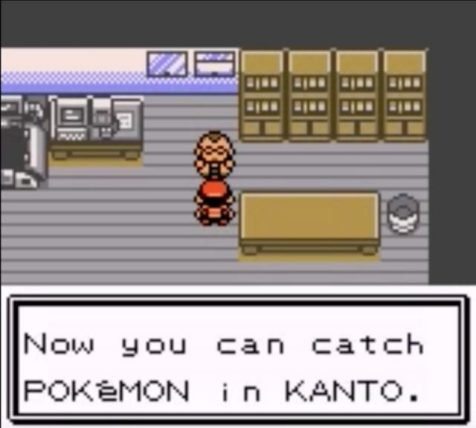
Back then, it seemed that the 2nd Generation games hit all the right notes. They made some changes to the Pokémon formula, but not too many. They added new features and made improvements that the original games needed. These games are revered and for good reason. Nothing can change the fact that they are excellent additions to the franchise. Looking back, however, it’s clear that these games are lacking in some areas. Any shortcomings that these games may have, we can’t exactly blame them for, since, for the most part, we are only able to recognize them as shortcomings because of how they were improved by the future Generations that didn’t exist at the time. Even though I have a few gripes with these games, I can’t in good conscience give these games less than four out of five stars because there’s no way many of these things would have occurred to almost anyone when these games came out. If anything, they only serve as a way to appreciate how far the Pokémon franchise has come since then.
Even though many would consider the 2nd Generation to be the greatest Generation, there are many things that have been improved upon since then. The most noticeable for me was the lack of the physical/special split that was implemented in Generation 4. In the 4th Generation, attacks were labeled as either physical or special on an attack-by-attack basis. This meant that attacks that require physical contact between the attacker and the attacked were labeled as physical while attacks that didn’t were special. For the first three Generations, attacks were labeled as physical or special simply based on what type the attacks were. This meant that a move like Fire Punch, which clearly requires physical contact since the attacker is punching its target, was labeled as a special attack because it’s a Fire attack, since all Fire attacks were special. Normal type attacks were physical, so Hyper Beam, which is clearly a beam of energy that doesn’t require physical contact between the attacker and the target, was labeled as physical. This is a problem because of how different Pokémon’s stats work. Gyarados, for example, is a Water/Flying-type whose Attack stat (which measures how strong physical attacks will be) is far greater than its Special Attack stat (which measures how strong special attacks will be). Generally, you want your Pokémon to know at least one attack that’s type corresponds with the Pokémon’s type because if a Pokémon uses an attack with the same type as the Pokémon, it will get what’s known as a Same Type Attack Bonus (or STAB for short), which makes the attack more powerful than if it was used by a Pokémon whose type does not correspond with the the attack’s type. Flying was a physical type back before the physical/special split, but Gyarados, despite its Flying typing, couldn’t learn any Flying attacks. Gyarados could learn several Water attacks however, including several Water HM moves, which are required to beat the game. But Water was a special type. Gyarados’ Special Attack stat wasn’t very good, so even though he got STAB from using a Water move, it still wasn’t very strong because of Gyarados’ low Special Attack. In newer games, you can teach Gyarados a move like Waterfall or Aqua Tail, which are Water attacks but are also physical, so they take advantage of both Gyarados’ STAB from using Water attacks as well as its high Attack stat to deal a ton of damage. Back in the 2nd Generation, however, it’s almost useless to teach Gyarados Water attacks because of how low its Special Attack tends to be, though it’s likely that you’ll end up teaching Gyarados some Water attacks anyway due to the aforementioned HM moves. Back in 1999 or 2000 or whenever these games came out in your country, the lack of a physical/special split isn’t something anyone would have complained about since the concept of it didn’t exist at the time, but it is something that could potentially sour the experience for someone going back to play these games today.
While I’m sure any hardcore Pokémon fan could come up with an extensive list of features that were implemented after the 2nd Generation that could be used to complain about Gold or Silver due to them lacking these features, it’s not worth doing since, like I stated in the last paragraph, you can’t really complain about games lacking features that didn’t even exist at the time. There is one thing in particular, however, that certainly has been handled better by later Generations but that probably could have been handled better in the 2nd Generation as well. This is how much grinding was necessary in these games.
The 2nd Generation games came along and brought post-game content to a whole new level.
For anyone reading this who doesn’t play RPGs, “grinding” is a technique used in the genre that is pretty annoying when it becomes necessary. Grinding basically just means to spend a substantial amount of time in one area, fighting a ton of enemies so you can gain as many experience points as possible. Grinding can also be used to gain in-game currency or dropped items, but usually the technique is used to gain experience so you can level up a lot and become really strong before entering the next area of the game. To be fair, I may have become spoiled by newer Pokémon games in which grinding is rarely necessary for a number of reasons. One is the new-and-improved Exp. Share. This is an item that has existed since the first Generation, but has been implemented in different ways. In Generation 1, the Exp. Share was called the Exp. All and it distributed experience points evenly amongst all Pokémon in the player’s party, regardless of whether they appeared in battle or not. After being divided by six (the maximum amount of Pokémon allowed in a player’s party at any given time), any experience earned ended up being rather small, making the Exp. All pretty useless, which was probably why its function changed so drastically for the next several Generations. From Generation 2 through 5, The Exp. All was changed to the Exp. Share, which was a hold item. You would have a specific Pokémon hold the item and then when one of your Pokémon won a battle, half of the experience points they would have won go to the Pokémon holding the Exp. Share instead. This was very useful for raising one Pokémon at a time, since you could have that one, weak Pokémon hold the Exp. Share and then have your strong Pokémon do all the fighting. Even then, though, a fair amount of grinding was usually required since experience points were being taken away from your fighting Pokémon, meaning they were growing slower than usual, and you could only have one Pokémon use the Exp. Share at a time. In Generations 6 and 7, however, the Exp. Share changed function again. As of now, the Exp. Share isn’t a hold item, but rather one you can choose to toggle on or off. Once on, all Pokémon in the player’s party receive experience points from a victory, but not in the way they did in Generation 1. Let’s say you participate in a battle where your Charizard defeats a Venusaur and gains 600 experience points. Using Generation 1’s Exp. All, Charizard would only gain 100 experience points and then the five other Pokémon in your party would also gain 100 experience points each. Using Generation 6 or 7’s Exp. Share, however, Charizard would still gain 600 experience points and the five other party members would all gain 300 experience points each. The new Exp. Share introduced in Generation 6 doesn’t take any experience points away from the Pokémon that actually did the fighting, the way previous Exp. Shares have done. Instead, it makes sure the fighting Pokémon still gets all the experience points it earned and then all your other party members all receive half that amount each. Your fighter is still gaining the same amount of experience points regardless of whether the Exp. Share is used and all your other party members are gaining experience too, not just the one holding the item. This makes it so you can raise an entire party at once rather than just one or two Pokémon at once, as used to be the case. Many would complain that adjustments such as this make Pokémon games easier and that the games were better when they were harder, but I tend to disagree for a few reasons. For one thing, if you don’t like how the Exp. Share works now, you can choose to just turn it off. Secondly, I don’t know that this Exp. Share necessarily makes the games easier (though it may be one of many factors that contributes to that), but what it does do is simply cut down on the amount of grinding the player has to do to make sure their entire party is strong enough to take on the next area of the game. There are ways that the 2nd Generation games are harder than more recent entries in the series, but more challenging doesn’t always mean better. I’ll use grinding as an example.
There was a lot more grinding in these games than I remembered. This makes sense for a few reasons. For one thing, since I had a generally positive experience playing these games as a kid, my memories of them tend to focus on the positive things about them, so I eventually forgot about any negative things. Unfortunately, that’s just kind of how memory works. Also, however, when I was a kid I used a strategy that my current self would scoff at. I had plenty of friends who did this as well, so it wasn’t just me, but it’s not a good strategy. I was one of those kids who would train my starter Pokémon exclusively, so it was way stronger than any Pokémon I fought against. I caught a few other Pokémon to basically use as HM slaves (Pokémon a player catches just so they can learn the HM moves that are necessary to finish the game, but that the player never actually uses in battle), but I only ever used my starter to fight. The obvious problem with this strategy is that if my starter ever got knocked out, whether it was due to type disadvantage or just a fluke, I was screwed and almost guaranteed to lose the battle. I justified this strategy to myself in a number of ways. For one thing, I knew from playground gossip that later in the game I could catch Legendary Pokémon that were on such high levels they made my starter look weak, so I figured I would just wait to catch those rather than catching a level 3 Zubat early on and painstakingly raise it to be strong on my own. The other justification was that by focusing on just one Pokémon, I could largely avoid grinding. I didn’t know the term “grinding” back then, but I knew the concept. No one likes grinding. But, if you want to have a good, well-rounded team, and if you want to win, then you’re probably going to have to do a lot of grinding in these games.
Let me give you a quick idea of why grinding becomes necessary in these games by giving you the most apparent example from my recent playthrough. The eighth and final Gym Leader in these games has a Pokémon that’s level 40. It’s her strongest Pokémon. She has three others that are level 37. If you’re going to beat her, you’re probably going to want to have a team of Pokémon that are around those levels. When I beat her, I had a team full of level 36 Pokémon with varying types, as well as one level 40 Pokémon (my newly acquired Lugia, which you catch at level 40). After beating her, I made my way to Victory Road, which acts as a prelude to the Pokémon League. I was able to recall from my various playthroughs as a kid that the strongest member of the Pokémon League, the Champion, Lance, had a level 50 Dragonite. Ten whole levels higher than the strongest Pokémon the last Gym Leader had. For anyone who doesn’t know, the Pokémon League works in a way unique to the rest of the game. Once you enter, you can’t leave. Not to grind, not to heal your Pokémon, nothing. You have to face four members of the Elite Four and then the Champion back to back. You have time in between battles to use whatever healing items you brought into the League with you, but once you enter, you can’t leave until you’ve either become the Champion yourself or you’ve been defeated. Again, maybe I’ve been spoiled, but in more recent Pokémon games, I’ve gotten used to beating the game without ever being defeated, and that was what I was going for in my recent playthrough of Silver. To do this, however, I realized that some grinding was necessary. By the time I got through Victory Road and defeated my rival who challenged me at the end of it, my party members were all around level 38 (once again, except for Lugia, who was still level 40). There were several trainers between Blackthorn City (home of the final Gym Leader) and the Pokémon League, but even after battling and defeating all of them, my team had only grown two levels. If my memory was correct and Lance did in fact have a level 50 Pokémon (which he did, by the way), implying that the rest of his team was probably in the high 40s, I had some training to do. As a kid, I probably would have walked straight into the Pokémon League, fully aware that I was going to lose, but knowing that I would do a little bit better every time I tried since my Pokémon would be gaining levels during those fights, even if I ultimately lost the battles. But I wasn’t okay with this during this playthrough. I hadn’t lost a single battle up to this point and I sure as hell wasn’t going to start now. So the grinding commenced.
I had defeated every trainer in Johto, so I couldn’t grind on them. Occasionally I’d get a call on my PokéGear from someone who wanted a rematch, but by this point their team was so weak and my team was so strong, it wasn’t worth me going out of my way to battle them since they would give me hardly any experience points. So I was left battling the strongest wild Pokémon I could find, which were in Victory Road. These Pokémon were leveled in the low to mid 30s. At first it was fine, since my Pokémon were only in the high 30s themselves. My goal was to get my entire team to at least level 45; then I might stand a chance against Lance. It took me six straight hours of grinding to achieve that goal. That was just one of many grinding sessions that took place during this playthrough. The longest grinding session (so far), but one of many. Grinding is not fun. At least it paid off, because I was able to beat the Elite Four and Lance all on my first try, so I remained undefeated, but man, at what cost?

Aside from the fact that there is a lot of grinding necessary (at least if you don’t want to lose), there’s also simply the fact that the games don’t make grinding easy. Oftentimes wild Pokémon are terribly under-leveled and trainers are not much stronger. This is likely one of the reasons why grinding becomes necessary in the first place; you know Gym Leaders are going to be strong, so you want to be strong yourself, but it’s hard to become strong when everyone you’re fighting is so weak. Here’s an example: Not long after I got my fourth Gym Badge, I entered an area where the strongest wild Pokémon were appearing at level 24. At the time, this was fine; my own Pokémon probably weren’t much stronger than that. The thing was that no wild Pokémon exceeded level 24 until well after I received my eighth and final Gym Badge. And like I said earlier, random trainers weren’t much stronger. The fifth Gym Leader’s strongest Pokémon was level 30. The sixth Gym Leader’s strongest was level 35. The seventh Gym Leader’s strongest was level 31 (by the way, why’s he weaker than the sixth Gym Leader?) and, as stated earlier, the eighth Gym Leader’s strongest was level 40. So there’s a ten level gap in between Pokémon you’re expected to beat, but wild Pokémon stay the same level that entire time. You’re going to have to grind in order to climb those ten levels yourself, but eventually you’re going to get to a point where level 24 Tentacools aren’t going to give you much experience points. This is why my team was only around level 36 when I fought the last Gym Leader. By the time your Pokémon are about ten levels higher than the wild Pokémon, they become not even worth grinding on because you’re so much stronger than them that they give you hardly any experience. You can argue that new Pokémon games are easier, but I think that they’re just better able to keep the player’s team growing at a pace at which they’ll be better able to take on the increasingly stronger enemies the game continually throws at you. However, I will also say that the newer games are probably better able to do this because the developers were able to learn from the older games.
This grinding issue even persists into the revered post-game in the Kanto region. And, believe it or not, the whole Kanto post-game isn’t as marvelous as a lot of us probably remember it being. While the idea of being able to explore past regions after beating the main game is awesome, the reality is that there actually wasn’t a whole lot to do in Kanto once you got there. Once again, at the time these games were released, this was way more post-game content than anyone could have expected, so you can’t blame the developers, but it is interesting to see how little there actually was in Kanto looking back. Many areas were substantially downsized, such as Mt. Moon or Viridian Forest, and other areas were removed completely, like the Underground, the Safari Zone and Cerulean Cave. As a kid, I didn’t mind this too much (in fact I didn’t even remember how much Kanto had changed in Generation 2 until I played Silver again recently), probably because there were often lore reasons for these changes. The Warden of the Safari Zone moved, so it had to close. The Police closed the Underground due to noise complaints from constant battling. The absence of Cerulean Cave is never explained, but one could probably assume that it eroded or caved in or something over the course of the three years in between Generations 1 and 2. And since Mewtwo isn’t in the game anyway, who cares about a Mewtwo-less Cerulean Cave? Mt. Moon and Viridian Forest may be practically nonexistent, but as a kid you don’t care because you just want to get from place to place as fast as possible to battle all the Gym Leaders of Kanto. As an adult, however, it’s kind of sad to see so much of Kanto missing. A lot of it was probably due to hardware limitations, as I imagine it would have been difficult to fit in two entire regions into the Game Boy Color cartridge’s limited memory, but they managed to basically do it anyway. It was kind of weird, however, having memories of going on this epic journey through Kanto in the 1st Generation games, only to be able to take over the region in less than a day in Generation 2, even just going at a normal, non-speedrunner pace. This may have been purposeful to make you feel like the powerful Champion that you now are, and that leads me to my next point about the Kanto post-game.
Looking back, however, it’s clear that these games are lacking in some areas.
The grinding issue unfortunately persists in Kanto. Almost everyone is really, really weak. All the wild Pokémon you’ll find are at the levels that they would have been in the Generation 1 games. Some of the Pokémon that appear are new, but don’t expect to find stronger Pokémon to rival your newfound power after defeating the Elite Four. So grinding on wild Pokémon isn’t a realistic possibility at this point in the game. Every trainer in Kanto (at least all the ones with no real significance) have Pokémon leveled in the 30s or lower. Since you’ve defeated Lance by this point, your Pokémon are probably leveled in the mid to high 40s, if not higher. My party members were all level 46 (except Lugia, who was level 48) by the time I became the Champion. Remember when I said earlier that Pokémon aren’t really worth grinding on anymore once you’re ten or more levels stronger than them? Well, not only are you not going to find any wild Pokémon strong enough to grind on in Kanto, but you’re not even going to find any worthy trainers either. And I would know, since I went out of my way to battle every trainer in the region. You’ll gain some levels anyway, eventually, just because of the sheer number of trainers, but you’ll be growing pretty slowly at this point. This isn’t much of an issue for the most part (at least not yet…), since at level 46 you’ll still be able to take on most of the Kanto Gym Leaders. These Gym Leaders are really the only trainers in Kanto worth a battle as each of them could easily be an Elite Four member based on the levels of their Pokémon alone. The thing is that they still won’t present much of a challenge. You just beat the Elite Four and the Champion back to back without getting a real break in between. Battling these Gym Leaders is like battling just one member of the Elite Four. After becoming the Champion, it shouldn’t be a problem. The fact that everyone else is so weak compared to you may make you feel cool and strong, the way a Champion should. In fact, this may have even been the intention. Everyone in Kanto (aside from Gym Leaders) probably only has Pokémon leveled in the 30s at the highest because it doesn’t make sense for random trainers to be as strong as Elite Four members, who have Pokémon leveled in the 40s. These random trainers shouldn’t be able to present a challenge to you. You’re the Pokémon League Champion! Why would you have trouble battling Youngster Brandon on Route 13 (please don’t look for Youngster Brandon on Route 13, I just made him up to prove a point)? So in terms of lore, it makes sense. The problem is that it doesn’t make for great gameplay.
Battling a ton of weak trainers in a row isn’t very exciting or engaging. It also doesn’t prepare you for what’s to come. The last Kanto Gym Leader you’ll fight is, fittingly, the strongest. The problem is that he’s the strongest by far. The Viridian Gym was left abandoned when its Gym Leader, Giovanni, was discovered to be the leader of Team Rocket and subsequently defeated into submission by the playable character in the Generation 1 games. Three years later, Blue, the canon name for the Generation 1 rival, has taken over as the Viridian City Gym Leader. This is kind of overkill since Blue was the Pokémon League Champion for a time, even if it was for just a few minutes before Red, the canon name for Generation 1’s playable character, took the throne from him. Anyway, Blue is definitely the strongest of Kanto’s Gym leaders, having Pokémon as strong as level 58. Now how the hell does the game expect you to get to level 58 to be strong enough to take on Blue? As I stated earlier, by the time I became the Champion, most of my Pokémon were on level 46. And this was after unholy amounts of grinding, defeating every trainer in Johto and rarely running from wild Pokémon. After defeating every trainer and every Gym Leader (except Blue) in Kanto, my Pokémon were about level 52. There were no trainers left to grind on. Grinding on wild Pokémon was pretty much pointless since at this point the strongest wild Pokémon I had access to were those level 30-somethings in Victory Road I ground to exhaustion before my battles with the Elite Four. So I really had nothing to do but to battle Blue with his level 54-58 team. Luckily, since I had a pretty well-rounded team as well as the advantage of being able to switch out Pokémon every time he was about to send a new one out, I was able to beat him despite being slightly under-leveled, and thus my undefeated streak continued. But the problem only grew from there.
The Generation 2 games may be the only ones to have what some may consider post-post-game content. On paper, what the developers had in store for players here is the coolest thing they could have done. In practice, it suffers the same grinding problem as the rest of the game. After defeating all of Kanto’s Gym Leaders, talking to Professor Oak will prompt him to give you access to the last area in the game: Mt. Silver. This is an area that’s been described as being too dangerous for most trainers, and the exception for you entering it is only being made because by this point you’ve conquered literally every other area in the game. There are no trainers in Mt. Silver, being the mysterious, secluded area that it is. The wild Pokémon here get up to level 48, so definitely the strongest that you’ll find. You can grind here until your Pokémon are leveled to around the mid-50s, but then you’ll find that you’re better off grinding elsewhere. With this being the place with the strongest wild Pokémon and having defeated every other trainer in the game, the only other place to grind is at the Elite Four. In newer games, after defeating the Elite Four for the first time, subsequent times you challenge the Elite Four will have them all battling with different Pokémon on much higher levels. Gold and Silver were before those days. The Elite Four and Lance, upon being challenged second, third, fourth, etc. times, will have the same teams on the same levels. So they’re all still leveled between 40 and 50. These are the strongest Pokémon you’ll find in the game outside of what’s waiting for you at the end of Mt. Silver. Chances are that once your team is around level 60, maybe 65 if you really stick it out, even grinding at the Elite Four won’t be particularly fruitful anymore, but you still have a long way to go.
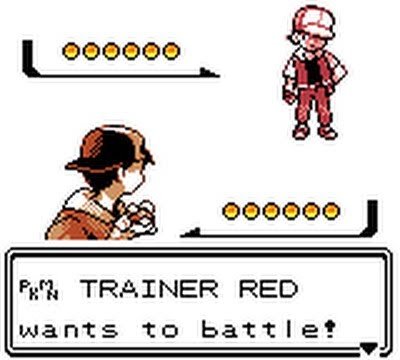
Okay, major spoiler time. At the end of Mt. Silver (which isn’t nearly as impressive or intimidating as you remember it being, believe me), you’ll find Red, the protagonist of the 1st Generation games himself. He is BY FAR the strongest trainer in the game, with his team ranging from level 76 to 81. WELL GOOD LUCK GRINDING ALL THE WAY TO LEVEL 80 WHEN THE STRONGEST POKÉMON YOU CAN GRIND AGAINST ARE LEVEL 40-50. Seriously, this takes forever. I actually haven’t even done it yet at the time I’m writing this review because I know that if it took six hours to just gain seven levels (from 38 to 45 before I challenged the Elite Four, as discussed earlier), it will take an eternity to get from where I am now (all Pokémon on level 54 after grinding at Mt. Silver) to a place where I’ll be able to stand a chance against Red. Remember how I said that once you’re ten levels higher than the Pokémon you’re grinding on, they’re not worth grinding on anymore? Well, at this point in the game, you’re being asked to get to a point where you’re going to be more than twenty levels higher than the Pokémon you’re grinding on and you still won’t be done grinding. Obviously, it can be done, since I and many, many others did it when we were kids, when we had a ton of free time and only these games to fill that free time with. And maybe I’ll get around to doing it again sometime. But probably not in the near future. And certainly not in a timeframe where this review would be relevant anymore.
I haven’t played the remakes of these games, HeartGold and SoulSilver, in a while now, but from some quick research I did, it seems that they managed to fix this grinding issue, at least to an extent. The members of the Elite Four still have Pokémon leveled 40-50, but the Kanto Gym Leaders have Pokémon leveled in the 50s in these remakes, so the player constantly gets stronger going through Kanto, instead of staying at relatively the same strength they were at after becoming the Champion. Additionally, all Gym Leaders from both Johto and Kanto are available to have rematches against, where they are even stronger, allowing for even more productive grinding. Then, the Elite Four also get stronger the second time around, having Pokémon leveled in the 60s and 70s. Having enemies this strong makes it MUCH easier to grind to higher levels. Red is stronger in the remakes too, with his strongest Pokémon being on level 88, making him the strongest trainer in any Pokémon game. But getting to a point where you can take on Red, even this stronger version of him, is much more attainable when you continually have enemies that challenge you rather than almost only ones who simply crumble to your might the minute you become the Champion.
There are other things about these games that many may have forgotten to time as well. As previously mentioned, Mt. Silver isn’t this huge, amazing last dungeon that many probably remember it as. Neither is Victory Road. Both caves are really just two rooms. They’re not a very big deal. Maybe they were back then, but they’re not now. Your Pack can only carry a limited amount of items. There will be many times, particularly as you get farther into the game where you’ll get a message reading, “You found a Rare Candy! But you can’t carry more items!” Then you gotta dig through your Items Pocket to see what you can do without and toss it so you can pick up the new thing. Team Rocket is pretty disappointing in these games. I guess it makes sense, since they don’t have any kind of clear leadership this time around, but still. They cut off some Slowpoke tails, which is a villainous thing to do, but they’re defeated pretty easily. Then you don’t see them for a long time. Then the showdowns at Lake of Rage, the Mahogany City Underground, the Goldenrod City Underground and Goldenrod Radio Tower all happen pretty much back to back, there are no particularly memorable members, like Giovanni was in Generation 1, and then Team Rocket is defeated. Then there’s a very brief sub-plot in the post-game where a member of Team Rocket gives you a bit of trouble because he doesn’t know Team Rocket broke up again, but then that’s it. Given what Team Rocket was in the 1st Generation, and given what other criminal groups in later games have been, Generation 2 Team Rocket isn’t very impressive. And before I revisited these games, I sure as hell didn’t remember all the grinding that was involved, but I already discussed that at length, so there’s no need to discuss it further. The point is that there are certainly negative things about these games, some of which were negative at the time and others that have become negative as the Pokémon formula improved over the years, that have often gone forgotten, whether consciously or not.
The Verdict
Pokémon Gold and Silver are great entries in the Pokémon franchise, but I would argue that every main series Pokémon game has been a great entry in the franchise. All of them bring new things to the table and generally improve the series from the previous entries. Does that make Gold and Silver any less great? No. These games have gone down in history as some of the greatest in the franchise and they deserve to be remembered as such. That being said, they’re not the be all end all Pokémon games that many seem to remember them being. If you’re someone who grew up playing these games, I would definitely recommend revisiting them. If you’re new to Pokémon and want to deeply explore the franchise’s history, playing these games is a necessity. However, if you don’t fit into either of those two categories but still want to see what the Johto region has to offer, you’re probably better off playing HeartGold or SoulSilver.


